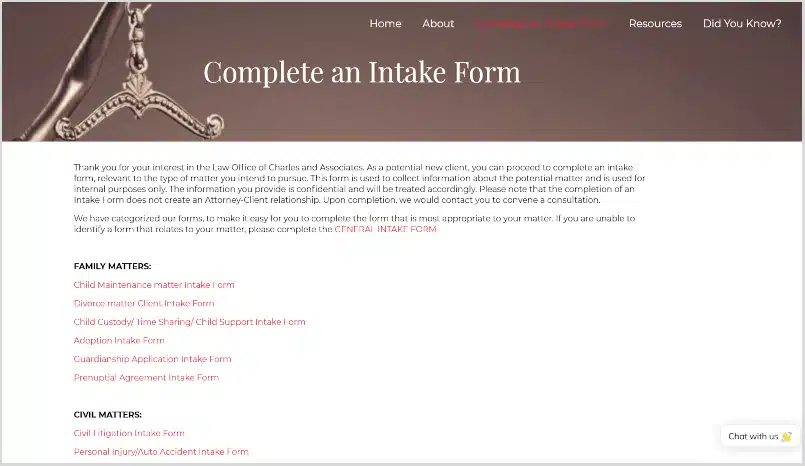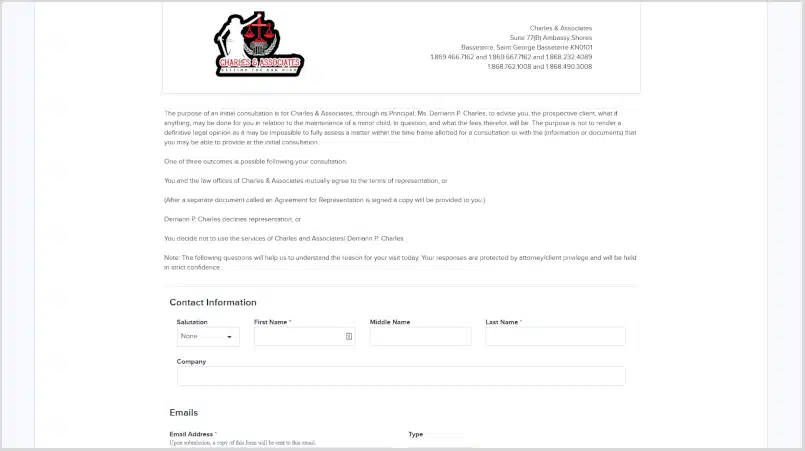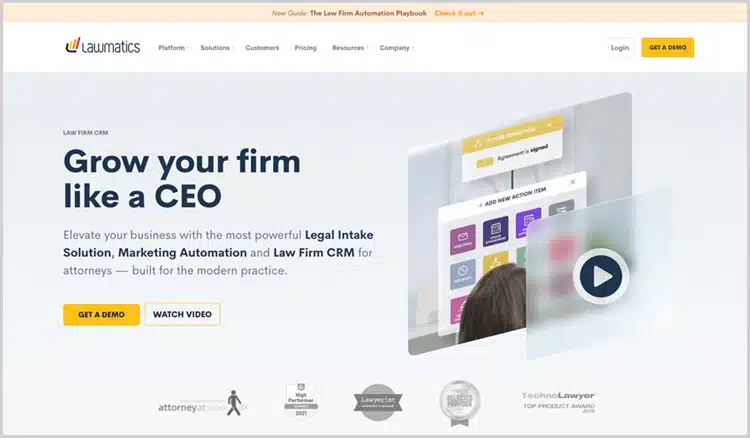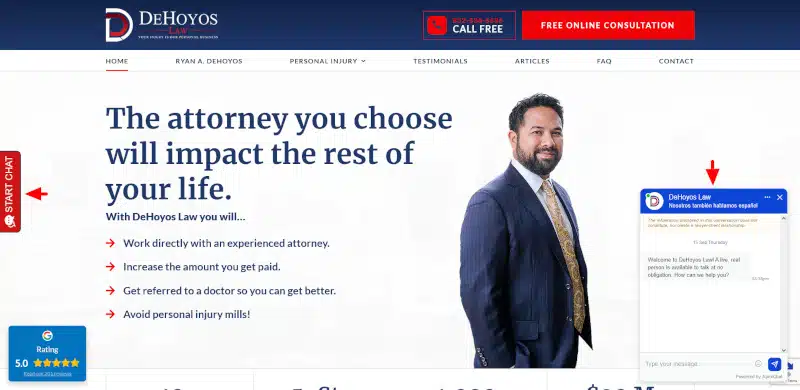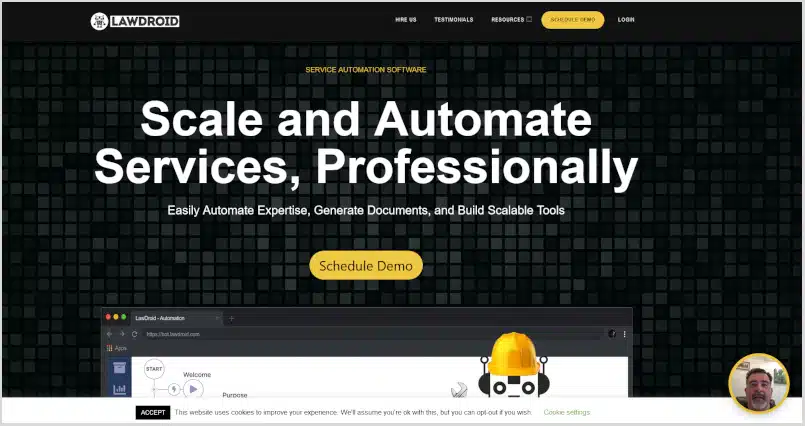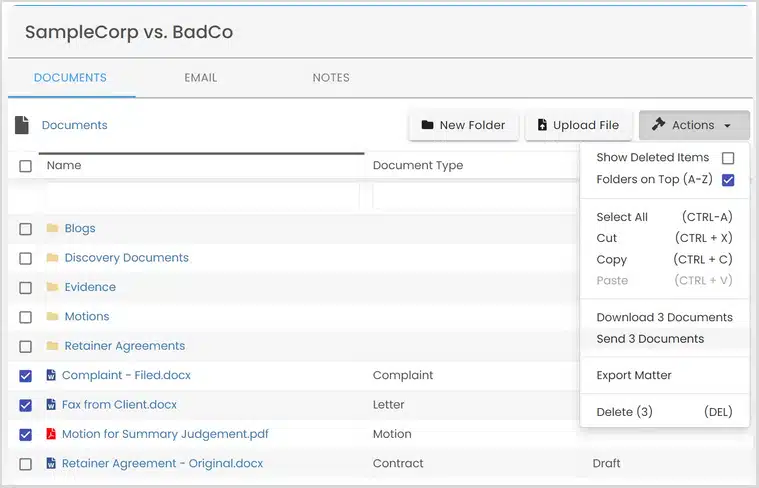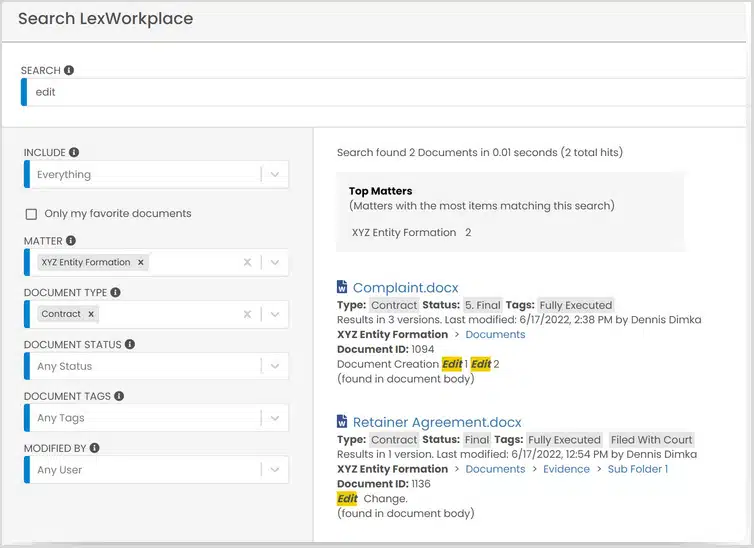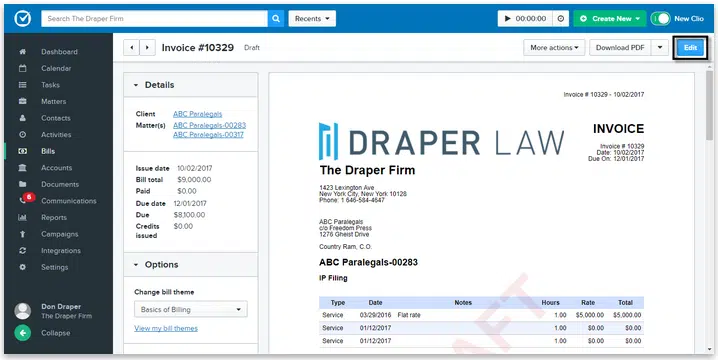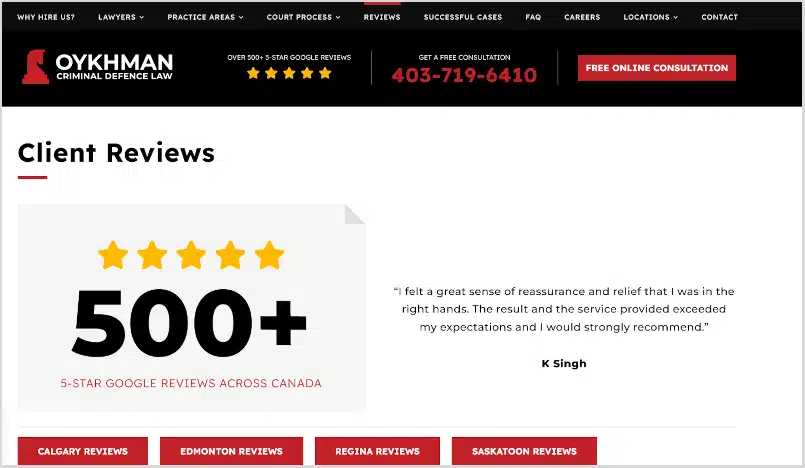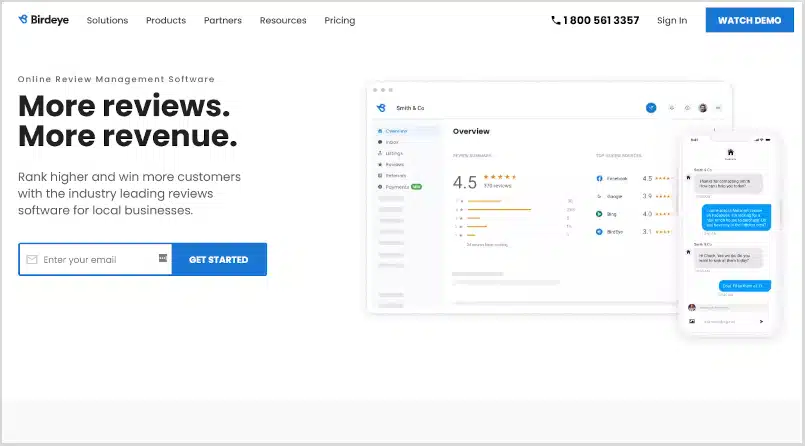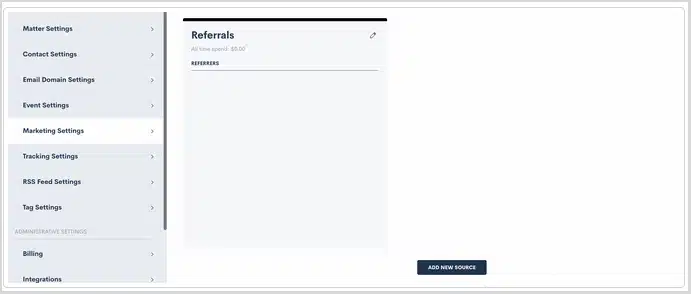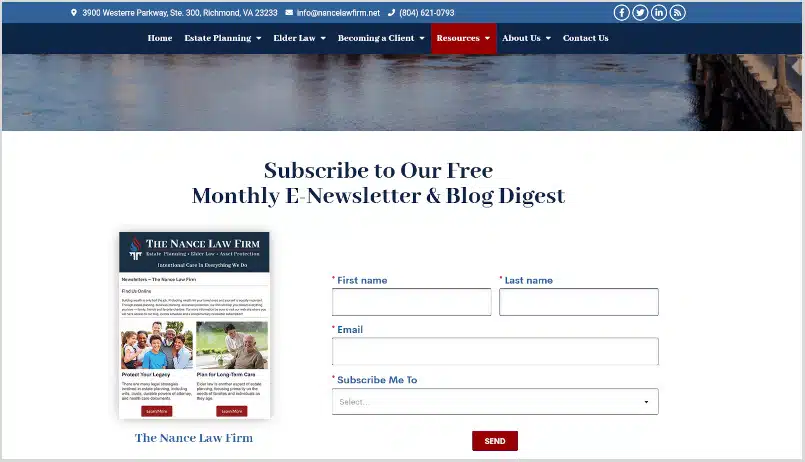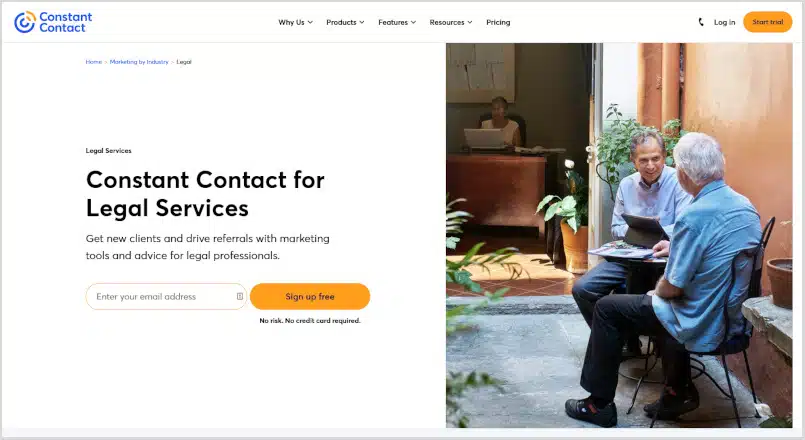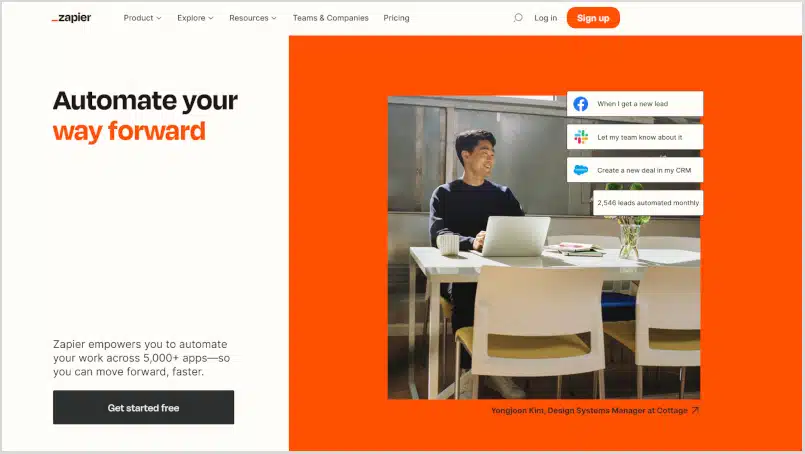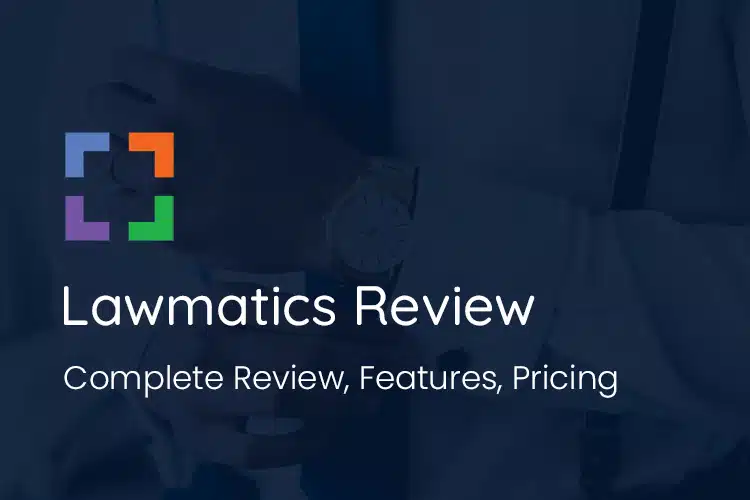Law Firm Automation: What You Need to Know
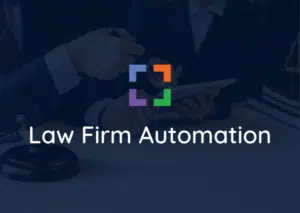
Most attorneys work far more than the average 40-hour working week, but only a fraction of these hours are billable and revenue-producing.
Many lawyers are caught up working “in the business,” looking after non-billable administrative, financial, or marketing tasks rather than the all-important casework.
The key to changing that is automation.
If more lawyers knew where to start with automating their law firm, they’d already be doing it — such are the benefits.
It’s not difficult to upgrade with all the legal automation tools around today. So, here we look at why law office automation is a must and where to start with freeing up time for more billable work.
Table of Contents
The case for and against automating your law firm
The case against automation usually goes something like this:
“Law firms are not like other businesses. Effective legal services rely on face-to-face contact with real people.”
This is true to an extent, and law office automation won’t change that. Automation will, in fact, allow you to spend more time with clients — whether that’s in face-to-face meetings, in court, or via video link.
If you’re struggling to get enough paying clients through the door, automation can help you free up the time to attract more clients to your law firm and grow.
The case for automation is backed up by some pretty compelling statistics.
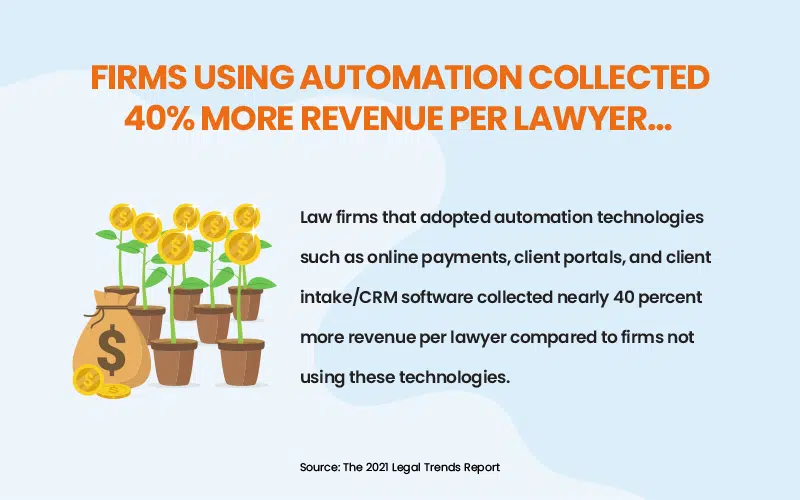
Most law firms still charge by the hour. Even with fixed-fee or contingency work, your time as an attorney is precious and is ideally spent predominantly on casework, where your expertise really pays dividends.
The problem is that many lawyers, especially solo attorneys and those in small law firms, get sucked into doing things that eat into billable time, such as:
- Admin tasks
- Bookkeeping
- Client intake
- Chasing payments from clients
- Emailing
- Marketing
These are all important tasks that a healthy business needs to prioritize. But nothing is more important than your clients — are you making enough time for them?
To free up time, you either need to hire more people (which can get expensive but is unavoidable in some circumstances) or use some of the many automation tools around that save time.
Automation won’t replace your legal expertise. It will allow you to spend more time practicing as a lawyer rather than as a business owner or practice manager.
So, let’s be clear on what automation can and can’t do:
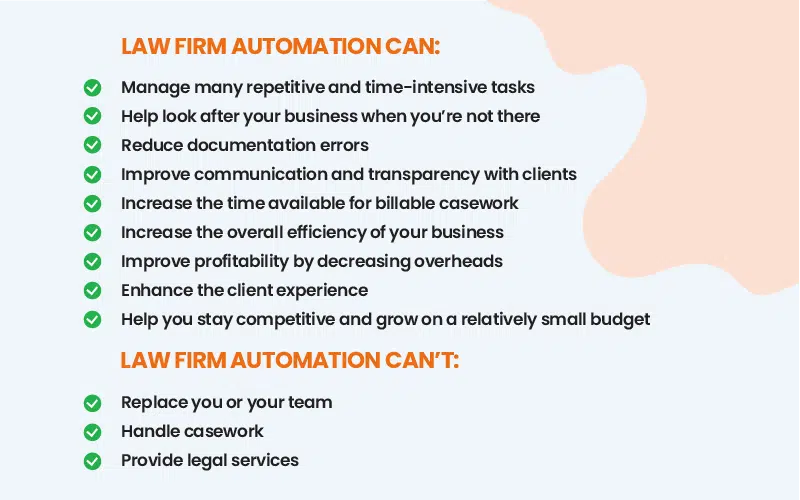
The benefits can’t be ignored. So, let’s see where to get started…
Getting started with law office automation
Where can the quickest gains be made?
Much of that depends on how much time you’re currently spending on non-billable work and why.
To effectively take advantage of automation, you’ll need to:
- Identify the processes that are taking up the most time (unnecessarily)
- Create an automation plan — with prioritized action points
- Research and access the relevant legal automation tools
This sounds like a lot of work, but as we look at each of these steps in more detail, you’ll see that the transition won’t take as long as you think. Besides, the time spent will be paid back many times over in the efficiencies you achieve in your firm.
Review and identify the most time-consuming processes
Which processes are eating into the time that you and your legal team could be spending on revenue-producing activities?
Maybe there are tasks you dread that don’t add great value to your firm and could easily be automated? Processes that you don’t like AND which take time AND which do not produce revenue are the prime candidates for law office automation.
Create a
Successful Law Firm Marketing Strategy
In 10 minutes or less!
Our template will help you to:
- Define your SMART goals
- Craft your brand story
- Create your customer personas
- …and more!
Research the best legal automation tools
Once you’ve identified the processes where the main time savings can be made, it’s time to research the specific legal automation tools that can help solve your main issues.
Many of these apps will be cloud-based and should present few technical issues, but you may need some IT advice at this stage. We cover many of the best automation tools for law firms below.
Create an automation plan for your firm
Next, prioritize the areas to focus on and commit to it in writing with an automation plan, including a timeline for implementation and a budget.
To avoid a major upheaval in your firm, you’ll likely need to introduce the new automated processes gradually, one by one, allowing users to get accustomed to the changes so that clients aren’t negatively impacted.

7 focus areas for law firm automation
As you put your legal automation plan together, you’ll need to focus on the processes/areas that unnecessarily take up the bulk of your time.
Typically, we’ve seen that the following seven areas are the “ripest” for automation in law firms…
1. Client intake
You may think that handling the client intake process manually adds to the “personal service” you provide.
The reality for many smaller law firms is that it just adds to delays. That’s not good for the client experience or the long-term health of your business.
Ultimately, you should never be too busy to onboard a new client properly, but without automation, that’s unfortunately often the case.
Regardless of your practice area, the client intake process is your client’s first “handshake” with your firm, and it’s important to get right. The information gathered creates the foundation for everything that follows and should be standardized (the same process for each type of client).
For instance, a criminal defense law firm will need a minimum of the following details (and often much more) when taking on a new client:
- Client’s name, ID and contact details
- Education/employment information
- Date/time/location of arrest
- Type of alleged offense
- Details about what happened during and after the arrest
- Date of the first court hearing (if known)
- Billing information
Once you have this information, your firm can internally assign the case to the most suitable legal professional(s).
Much of the information-gathering process can be automated, providing a better client experience than if it’s left to memory, availability, and chance.
Charles & Associates, a multi-practice firm in Kentucky, allows client intake forms to be completed online for each practice area from links on its website.
When one of the client intake form links is clicked, a new client gets taken to a page that looks like this.
With cloud-based automation software, you can create standardized forms like this and enable the client to complete all of the necessary details online securely and from any device.
This syncs with your practice management software — requiring no paperwork and introducing a more streamlined process for you and the client.
Which legal automation tools are best for client intake?
The client intake automation tools you choose should integrate simply with your practice management software. Typical tools include:
- Customizable client intake forms that automate the information-gathering process
- e-Signature software that allows clients to sign agreements electronically
- Scheduling software that allows clients to arrange appointments
These features are usually part of the best legal customer relationship management (CRM) software packages — take your pick from multiple choices, including Lawmatics, Law Ruler, Zoho, Clio Grow, and many more.
2. Client communications
Once a client is onboard via (hopefully) an automated client intake process, regular communication is important.
That can be time-consuming for lawyers in all practice areas — whether you need to gather evidence to build a personal injury or criminal defense case or simply require information to create the right estate planning documents.
Many client interactions will need to be personalized and one-to-one — as billable time. Besides the phone, email and text messaging, though, we now have other communications options, including live chat services, instant messaging on social media, virtual meetings, and so on.
Live chat agents are great for answering basic queries from prospective and existing clients directly from your website. Get it right with your law firm’s live chat service, which can be a personal assistant working for you 24/7.
An automated chatbot is an alternative option to a live chat agent. A bot can’t be expected to handle sensitive queries, but if you automate any communications that can reasonably be automated, it will save you a lot of time.
For instance, an estate planning lawyer can set up automated email responders when a client’s last will and testament is ready to be signed, a divorce lawyer can do the same for reviewing a separation agreement, and a personal injury lawyer can do the same when a settlement check has arrived.
Consider programming your CRM software to send emails to clients when key milestones are reached in their case and to remind you about when follow-up emails are required with clients.
The client will appreciate the timely communication and you get to maintain the relationship and the flow of information without it eating into your time — and without having to answer so many inbound queries from clients about their cases.
Which legal automation tools are best for client communications?
Many of the best tools for automating client communications can be found within the leading legal client relationship management (CRM) systems — allowing you to automate tasks, emails, and workflows for clients from a single convenient location. Clio Grow is one good example.
Chatbots include Smith.ai (which is non-legal-specific) and LawDroid, which provides additional automation benefits (e.g., client intake) to its chatbot services.
Case Status helps you automate the process of providing clients with key status updates. A few of the best live chat apps for law firms include Ruby, ApexChat, and CUGIC.
LexWorkplace helps you manage your email, and other documentation and notes by client or matter and search/find emails in seconds.
3. Document management
Most law offices that are serious about automation need to focus on their document creation and management processes.
Creating, editing, sharing and storing legal documents more effectively makes a big difference to your efficiency as a law firm.
Lawyers can create templates that cover the main topics and be stored centrally. New documents for cases can be accessed and collaborated on — with the latest version saved automatically in the cloud — by anyone with authorization.
Such systems are now very secure and maintain data privacy. They reduce the requirements for paper, ensuring that everyone in the law office who needs to can find, access, and work on the latest version of a document and send it to anyone who needs a copy.
This can be done from the same software package rather than having to copy, paste, attach, open other programs, and otherwise add to the number of steps (and time) required.
Lawyers can easily manage the system themselves, boosting efficiency and saving time compared to more traditional document management methods. Days of work can be reduced to hours and hours of work reduced to minutes — with fewer errors.
When a new lawyer joins the firm, the templates are already there to use, making life easier from day one.
Which legal automation tools are best for document management?
The best law firm document automation tools provide templated PDF and Word forms, letters, agreements and other documents, making legal document location, creation, collaboration and sharing quick and simple from a centralized location in the cloud.
LexWorkplace is one of the best solutions with such features.
4. Payment collections
Most lawyers hate chasing money from clients. It’s also time-consuming.
Some just give up: did you know that 11 percent of law firm invoices went unpaid in 2021? That means one in every nine billable hours worked goes unpaid for one reason or another.
The good news is that both problems (wasted time and wasted revenue) can be eased by automation of your law firm’s billing system.
Automation can help you invoice with fewer errors and get paid quicker, with less chasing and fewer delays over disputes with bills. Offering electronic payment options is crucial as many clients simply expect it these days. It also creates an audit trail that can help with compliance and accountability matters if disputes arise.
In one recent survey, 66 percent of respondents said they’d prefer to pay a legal bill online. Helping clients pay the way they want means quicker settling of invoices and less time spent following up.
In the same survey, 40 percent said they’d never hire a lawyer who didn’t accept debit or credit cards.
Which legal automation tools are best for payment collections?
Most firms should consider a dedicated cloud-based legal billing platform that streamlines the collection of payments.
An automated billing system may be part of many practice management software packages — with the added advantage of immediately integrating with the rest of your software.
Clio Manage is a good example.
The best automated billing software can:
- Send accurate invoices promptly and securely by email
- Accept multiple payment methods (including through the use of payment plans)
- Accommodate retainer payments
- Send automated follow-up email reminders for outstanding payments
- Send automated “thank you” notes for payments received
- Sync seamlessly with your third-party accounting system
You get to create and approve bills wherever you are and from any device and can even automatically apply interest charges to overdue payments, if necessary,
5. Client testimonials
Most people looking to hire a lawyer online will seek social proof or word-of-mouth referrals before hiring. They’re looking for reviews that relate positive experiences of the firm to help validate their choice.
According to the 2021 Legal Trends Report, 82 percent of people are influenced by reviews or testimonials. They’re extremely persuasive and greatly impact your firm’s reputation, as Oykhman Criminal Defence is well aware.
Gathering client testimonials should be a central part of your marketing process after a case is closed. The process works best if automated because then nothing “slips through the cracks”, gets forgotten or takes up valuable time.
Testimonials for law firms can be left in multiple places online such as Google, Avvo, Lawyers.com and Yelp.
Most clients will willingly leave a review if they have had a positive (or negative) experience but they may first need to be asked and directed to the review site.
Which legal automation tools are best for testimonials?
Automating the testimonial-request process is relatively simple with the right software. Reviews should be treated as part of the overall case management workflow automation process, with an email (or even text message) set up to go out to clients after the case is completed.
When a client is onboarded and entered into your CRM and a case is opened, the expectation of a testimonial at the end of the case should already be ingrained.
The Birdeye tool should integrate with your law practice management software and help you look after this process with the minimum of time or effort on your part.
6. Tracking client referrals
According to the 2021 Legal Trends Report, 81 percent of people hiring lawyers seek a positive personal recommendation or referral.
Some law firms still get most of their business from referrals without even having a defined system for obtaining them.
Much of the groundwork you’ll need for reaching out and connecting with professionals in related industries and building strategic relationships with other attorneys will need to be done yourself. It’s key work that relies on your professionalism and your reputation as a lawyer.
However, it’s important once these relationships have been established and referrals start rolling in to track, monitor and measure the success of your referral campaigns. That way, you can focus your next campaign on the types of professionals that generate the most business for your firm.
Which legal automation tools are best for tracking client referrals?
The ideal way to keep track of your referrals is via your CRM software, which we have mentioned multiple times already.
The best CRM packages (e.g., Lawmatics) can track not only the contact information of each client and partner but each interaction and touchpoint.
You should also be able to link each referral partner to the clients they have referred and run monthly reports on the number of referrals and the total revenue generated.
7. Email marketing
Pound for pound, when email marketing campaigns are managed well, they are one of the most effective law firm marketing strategies around.
In a State of Email survey conducted in 2020, it was estimated that for every $1 you spend on email marketing, you can expect an average return of $36.
By design, most email marketing for law firms is automated. Nobody manually sends 5,000 newsletters out each quarter.
But many firms are missing out on the benefits. Email automation tools can help you reach out to large numbers of existing and prospective clients, improving client retention and generating a steady flow of new leads without it adding significantly to your overheads or workload.
Which legal automation tools are best for email marketing?
The best email marketing tools help you create emails from templates, schedule and send them out to your list even while you’re sleeping, and track conversions.
Many of these email tools integrate with your CRM so that everything can be tracked and monitored centrally.
Typically, law firms use automation tools like Constant Contact, Mailchimp, AWeber, or Campaign Monitor.
Manage and monitor the implementation of new technologies
Before we wrap this up, a quick word about the implementation of these automation tools.
If you’ve decided to “get automated” in your law office, the introduction of new technologies, processes and systems needs to be carefully managed.
Your people may need training to transition to the new system before it runs smoothly. Involve them in the process and seek their input. Often, it’s best to introduce the changes gradually, tool by tool.
Once the new tools are up and running, monitor performance and seek feedback.
Hopefully, you will see all the benefits outlined above but if there are glitches, these can be uncovered early and rectified if you regularly review the new technology.
Tools like Zapier can help you integrate apps into your existing setup and get several automation tools working seamlessly together. You may, however, need to customize the new tech a little more before it integrates perfectly.
Automate and grow
Who knows? In the future, AI-based robots may be able to offer a full range of legal services but we’re not close to being there yet.
Automating your law office in 2022 still requires you to be there!
The goal to provide a fantastic client experience surpassing expectations is still the best way to run an efficient and profitable law firm. Your skills are essential for that but you’re ineffective if your time is eaten up doing repetitive tasks.
Automation can help. For solo or small firms, in particular, it will help free up your time and level the playing field so that you can remain competitive with larger firms.
In truth, most firms could be doing more with automation, and this guide should help you get started.
Want to do more than just "get by"?
Attract (and convert) qualified sales leads with Legal Marketing 360, our all-in-one law firm marketing package that includes an expertly crafted Google Ad campaign, SEO program, and website design.
Dennis Dimka
As the founder and CEO of Uptime Legal Systems, I've had the privilege of guiding our company to become a leading provider of technology services for law firms.
Our growth, both organic and through strategic acquisitions, has enabled us to offer a diverse range of services, tailored to the evolving needs of the legal industry.
Being recognized as an Ernst & Young Entrepreneur of the Year Finalist and seeing Uptime Legal ranked among the Inc. 5000 list of fastest-growing private companies in America for eight consecutive years are testaments to our team's dedication.
At Uptime Legal, we strive to continuously innovate and adapt in the rapidly evolving legal tech landscape, ensuring that law firms have access to the most advanced and reliable technology solutions.
Related Posts
May 15, 2023
Keyboard Shortcuts for Legal Symbols: How to Enter the Section Symbol (And More) Into Your Documents
Looking to draft your legal documents…
